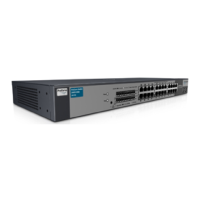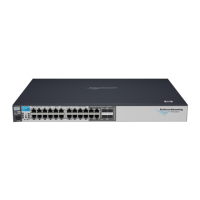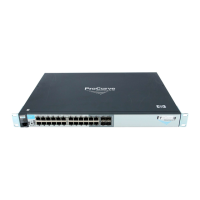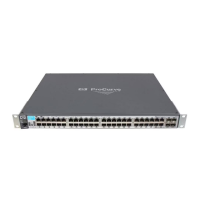9-38
Configuring and Monitoring Port Security
Configuring Protected Ports
Configuring Protected Ports
There are situations where you want to provide internet access to users but
prevent them from accessing each other. To achieve this control, you can use
the protected-ports command.The command applies per-port, and filters the
outbound traffic from a port. This allows the configuration of two port groups
on a switch—protected ports and unprotected ports. The ports have these
characteristics:
■ Traffic from protected ports is not forwarded to other protected ports.
■ Protected ports can communicate with unprotected ports, but not
with each other.
■ Unprotected ports can communicate with all ports.
■ The protected-ports command applies to logical ports (trunks as well
as untrunked ports)
Note On switches covered in this guide, you must configure a minimum of 2 ports.
Figure 9-20. Example of Protected Ports Command
Syntax: [no] protected-ports <port-list>
Prevents the selected ports from communicating with each
other. You must configure two or more ports.
no protected-ports all
Clears the protection from all ports; all ports can now com-
municate with each other.
ProCurve(config)# protected-ports 7
Must have at least 2 ports configured as protected.
ProCurve(config)# protected-ports 7,8
Must configure at least two ports
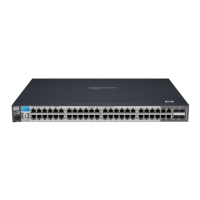
